
2. After writing the numbers next step is to have knowledge about the quadrants. As it forms a + like symbol and is divided into 4 quadrants where each quadrant has there specific sign.
Before plotting the coordinate graph points in a plane then you must be aware with the coordinates (x, y). We basically use a 2D formation having two coordinates x and y, if you are wishing to create graph points on a coordinate plane then below we are providing instructions of doing that.
- Quadrant I : The position of quadrant I is around the y axis which is at the above and left side of the y axis. It is having both positive numbers i.e, (+, +).
- Quadrant II : This is the another quadrant which is having 2 numbers from which first is negative and second is positive which means it is having (-, +) symbols.
- Quadrant III : The another third quadrant in which both the numbers are in negative. It means that it is having (-, -) symbol.
- Quadrant lV : It is the last quadrant of coordinate plane where first symbol is positive and second one negative. It means that it is having (+, -) symbols.
Today we are here going to provide you the coordinate graph papers online which you can download and take print of it for your personal or professional use and the best part is that you are going to get them entirely free of cost. Now, if you are the first time going to use this paper then you might be thinking that how to use it let us explore the procedure for your understanding.
Polar Coordinate Graph Paper

We have seen various types of graph papers in our academic life and if you are a student then for sure you have heard about the coordinate graph paper. Especially in Mathematics, we learn about coordinates which are x and y, these coordinates can be plotted on a Graph paper and then a statistical measurement is plotted. Coordinate graph paper is entirely similar to a general graph paper either in structure and other means apart from this it has well-defined margin borders helping you in plotting a perfect coordinate graph.
1. While graphing the points on any coordinate plane it is necessary to first of all understand the method as it is only done in the form of x, y. You must know that x axis is always in the horizontal direction that is it goes from left to right and the y axis is in vertical direction means it moves up and down. The another thing needs to learn is about the numbers there are two types of numbers plotted on a graph paper positive and negative. It is necessary to be aware about it that where the positive number is written and where the negative one.
So by this we can simply find the values and the signs of number as per the quadrants in which they lie. The another point to remember is that the origin of coordinate plane is always from (0, 0). This was a brief introduction related to the coordinate plane you can easily go through it for your reference and start plotting a coordinate graph without any problem.
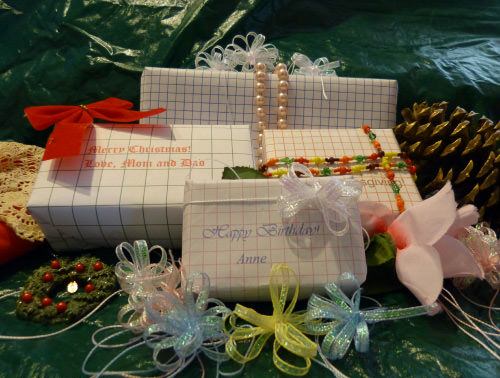
If you're in the odd situation where you need ten lines per inch, our inch paper is almost perfect.
When you're in a pinch you can use graph paper like wrapping paper.
Coloring the large graph squares makes seeing the groups easier for little ones.
Make it special. Our printable graph paper is interactive so you can type a note before you print instead of finding a gift tag.
2. Metric Measure - Centimeter Graph Paper
We've spent hundreds of hours on the creation of these printable graph paper downloads, the gift wrapping ideas, and, yes, a few hours thinking about school related ideas and we hope that this page serves you well.
Through the years I've learned a variety of ways that you can use printable graph paper.
Note: If you want to save any personalized downloads, save the download to your computer first so that you can "Save As" your new version and also keep the original.

“We all know squares are aesthetic creatures full of symmetries, congruences, similarities and other niceties,” reads the chirpy article on graph paper exercises from a 1978 issue of the journal The Arithmetic Teacher, published by the National Council of Teachers of Mathematics. It’s hard to deny that the square’s main virtue is its inherent reliability. Miniaturized and multiplied into a grid, squares become the foundation upon which almost everything in physical life is built. Printed onto graph paper, the grid becomes the ideal surface for new creation—portraits, paintings, posters, architectural drawings.
“I think the attraction is nostalgia and a curiosity,” Neal Whittington, the owner of Present & Correct, writes in an email. “My customers love any kind of niche graph paper which they haven’t encountered before.”
A 2006 academic paper (pdf) detailing the milestones in “cartography, statistical graphics, and data visualization” credits the patenting of commercially-produced printed graph paper to a Dr. Buxton of England in 1795. One prominent early adopter of the commercial paper was Thomas Jefferson, who drew up plans for the Virginia Capitol on specially engraved “squared paper”—originally intended for silk weavers—ordered from Paris. A nut for the decimal system, Jefferson preferred gridded paper that was graduated in decimal divisions. Across the pond, the British 19th-century scientist Luke Howard, who invented the cloud classifications, was another early advocate. He used it to graph barometric variations in his published research.
One of the most famous fans of the grid is minimalist artist Sol Lewitt, who first used the pattern in his three-dimensional modular cube structures. In 1968, he started translating the concept to drawings. Lewitt’s grids harken back to school days: They are math lessons in and of themselves. For a 1968 publication called The Xerox Book, Lewitt worked out a system of 24 permutations of a line drawn four different ways: horizontal, vertical, 45º diagonal right and 45º diagonal left. Soon after producing that drawing, Lewitt created his first in a series of wall drawings, in which he (or an assistant) would draw his complex and mesmerizing grids directly onto a gallery wall.
The grid goes modern

Postmodern graphic designers in the 1970s and 1980s took a similar approach to the grid, seeking to subvert its association with rationality and cool calculation. The ripped and collaged graph paper in Wolfgang Weingart’s State Art Aid poster, for example, and April Greiman’s theme of fragmented gridded planes viscerally expressed the postmodern notion that surfaces—whether in the form of conventions and norms, or hollow consumer ads—covered up the truth. A disillusionment with the Vietnam war, capitalism and government corruption led postmodernists to parody the fakeness of surface appearances.
Contemporary American artist Chuck Close started out using the grid as a way of ordering reality in his photo-realistic portraits. In his early paintings, he famously used the grid as an invisible mapping tool, much like the 15th century artists, but later he brought the grid to the forefront as a present, and defining, aspect of his work.
But a dive through the history of the gridded notebook—and its immutable predecessor, the grid—reveals that it’s not as straight and narrow as it might seem. From the 15th century to today, gridded paper’s cultural significance has taken swerving, unpredictable, and altogether fascinating path.
Other artists, including the cartoonist and illustrator Saul Steinberg, avant-garde composer Morton Feldman, and German conceptual artist Hanne Darboven, all made extensive and experimental use of graph paper and the grid. In the hands of abstract artists, the graph made the surface of an artwork total and complete. Its purity and rationality was a way of expressing the modernist belief in an optimistic future.
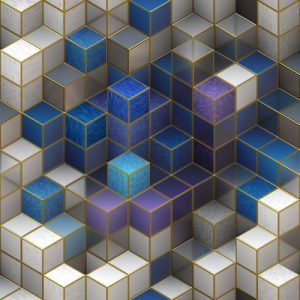
However, you can also use graph paper for fun. It's perfect for creating complex designs for interior design, quilting, beading, embroidery, and knitting. It's also an excellent tool for games that feature maps or strategic divisions of space: for instance, most role-playing games use graph paper to show where characters are in relation to terrain, each other, and enemies.
Multiplication and division. Use rectangular shapes to demonstrate how 3x8 yields the same result as 4x6 by graphing 3 rows of 8, then graphing 4 rows of six, and then counting the resulting squares.
Learning coordinate geometry and struggling with some of the concepts? Use our guides to the four graph quadrants and completing the square to help fill in some of the gaps.
If you’re doing a lot of coordinate geometry, save yourself some time with graph paper that already has an XY-axis on it!
What Is Graph Paper?
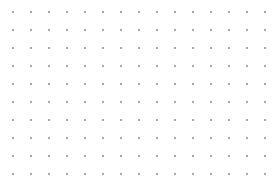
Have friends who also need help with test prep? Share this article!
Dot paper is graph paper that only marks the corners of the grid squares and leaves out their sides.
In this kind of graph paper, instead of squares, the grid is made up out of equilateral triangles.
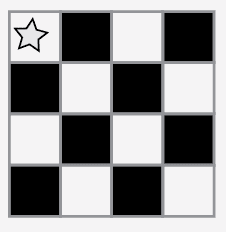
- Move One Square Right
- Move One Square Left
- Move One Square Up
- Move One Square Down
- Fill-In Square with color
Some of your class may notice that there is an unnecessary step, but hold them off until after the programming stage. Walk the class through translating the algorithm into the program:
Use these activities to enhance student learning. They can be used as outside of class activities or other enrichment.
That’s simple enough, but it would take a lot of writing to provide instructions for a square like this:
Vocabulary
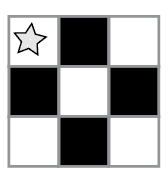
- Have your class try making up their own images.
- Can they figure out how to program the images that they create?
In this instance, the arrow symbols are the “program” code and the words are the “algorithm” piece. This means that we could write the algorithm:
Using arrows, we can redo the code from the previous image much more easily!
(Notice that we have written our program from left to right like you would read a book in English)
